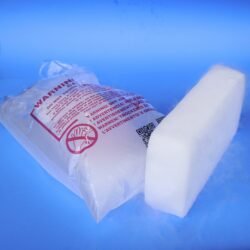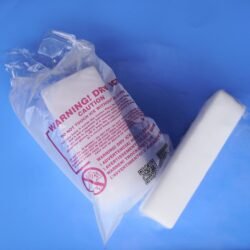Whether you’re a seafood vendor shipping fresh catch to a customer or a hobby angler sending frozen fillets to a friend, shipping fish isn’t as simple as tossing it in a box. It’s a delicate process—fish is highly perishable, and just a few degrees of temperature fluctuation can compromise its texture, safety, and flavor.
In this guide, we’ll break down exactly how to ship fish, including how to ship frozen fish using dry ice, the right insulation methods, and packaging best practices to ensure it arrives safe, cold, and delicious.
Why Fish Is One of the Most Sensitive Products to Ship
Fish is a high-moisture, high-protein food—which means it’s prone to bacterial growth and spoilage when not kept cold enough. Shipping it without a plan isn’t just risky—it could result in unsafe food, regulatory violations, or a refund request from a disappointed customer.
Fresh Fish
- Must be kept near 32°F (0°C)—ideally on gel packs or flaked ice.
- Not recommended for multi-day shipping unless expedited.
Frozen Fish
- Must remain below 0°F (-18°C) to stay stable and avoid thawing.
- Best shipped with dry ice in properly insulated containers.
If you’re wondering how to ship frozen fish, the answer lies in controlled insulation, smart packaging, and a reliable cold source like dry ice pellets.
Materials You’ll Need to Ship Frozen Fish
To keep your fish safe during transit, you’ll need a combination of insulation, cooling agents, and protective packaging.
🧊 Essential Materials
- Dry Ice Pellets – The preferred method for keeping fish frozen without moisture buildup.
→ Buy dry ice pellets - Insulated Cooler – Protects against external temperatures. Use a rigid or soft shipping cooler.
→ Cooler - Silver Mylar Bag – Reflects heat and minimizes air transfer inside the cooler.
→ Silver mylar bag - Vacuum Sealed Fish – Helps reduce odor, bacteria exposure, and leakage.
- Cardboard Shipping Box – Provides structural support around the cooler.
- Shipping Tape & Dry Ice Labels – Required to meet legal standards and carrier policies.
How to Ship Fish: Step-by-Step Packing Guide
This method applies to both frozen and chilled fish. For frozen, follow all steps below. For fresh fish, replace dry ice with gel packs.
Step 1: Freeze the Fish
Start by freezing the fish completely. Ensure it is vacuum-sealed and solid to prevent partial thawing in transit.
Step 2: Line the Cooler with a Silver Mylar Bag
Place a silver mylar bag inside the cooler to add an extra layer of insulation and reduce condensation.
Step 3: Add Dry Ice Pellets
Place 5–10 lbs of dry ice pellets in the bottom of the cooler. Use more for longer distances.
→ Buy dry ice pellets
Step 4: Layer the Fish
Place the fish on top of the dry ice. If packing multiple portions, alternate layers of dry ice and fish. Avoid direct contact to reduce freezer burn.
Step 5: Close & Vent
Seal the silver mylar bag and close the cooler lid. Do not make it airtight—dry ice must have ventilation to prevent gas buildup.
Step 6: Place in Outer Box & Label
Put the cooler inside a cardboard box. Clearly label with:
- “Dry Ice – UN1845”
- Net weight of dry ice
- “Perishable”
How Long Does Fish Stay Frozen in Transit?
Using dry ice and a well-insulated cooler, frozen fish can stay solid for:
| Dry Ice Amount | Cold Duration | Use Case |
|---|---|---|
| 5 lbs | 24 hours | Same-day or overnight |
| 10–15 lbs | 48–72 hours | 2-day or weekend trips |
Ambient temperature, package size, and insulation quality will impact results. Always err on the side of over-packing dry ice.
Carrier Guidelines for Shipping Fish with Dry Ice
Most major carriers allow you to ship frozen fish using dry ice, but rules vary slightly.
FedEx:
- Allows up to 5.5 lbs of dry ice for air
- Requires UN1845 labeling
- Must be vented (no sealed containers)
UPS:
- Similar to FedEx but allows more for ground shipping
- Package must declare contents and cooling method
USPS:
- Allows dry ice, but discourages raw meat and seafood
- Best for shelf-stable or smoked fish products
Common Mistakes to Avoid
- Using Too Little Dry Ice
Always use more than you think you need—especially in summer. - Skipping the Mylar Layer
A silver mylar bag adds up to 25% more cold retention. - Vacuum Seal Failure
Non-sealed fish may leak, smell, or contaminate the cooler. - Incorrect Labeling
Missing “Dry Ice – UN1845” can cause shipment rejection or delay. - Shipping Fresh Fish Long-Distance
Unless you’re using gel packs and overnight service, stick with frozen fish.
Where to Order Shipping Supplies for Fish
To ship fish with total confidence, get everything from one trusted source. At SubZero Dry Ice, we offer:
- Buy dry ice pellets
- Coolers built for frozen shipping
- Silver mylar bag insulation
- Full packing kits for meat, fish, and seafood
Ready to go? Place your dry ice online order today and get what you need delivered fast.
Final Thoughts: Frozen Fish Shipping Made Simple
Shipping fish—especially frozen—requires more than just a box and tape. It takes careful packing, consistent cold, and materials that are up to the job.
By following these best practices for how to ship frozen fish, and using tools like dry ice pellets, coolers, and silver mylar bags, you can make sure your shipment arrives exactly as intended: cold, fresh, and safe.
Whether you’re sending a small box or running a seafood business, SubZero has the tools and expertise to help you ship it right—every time.





